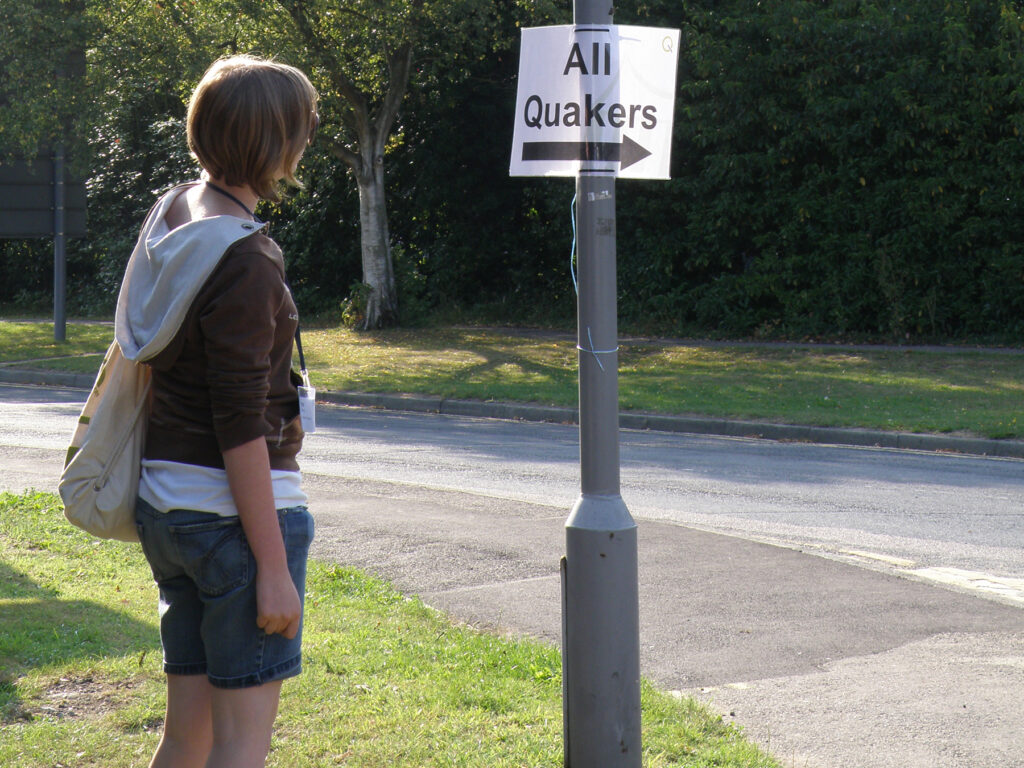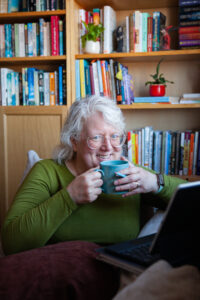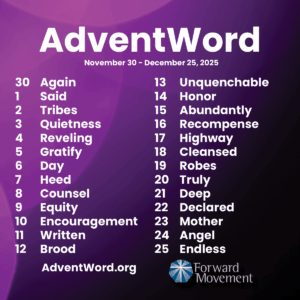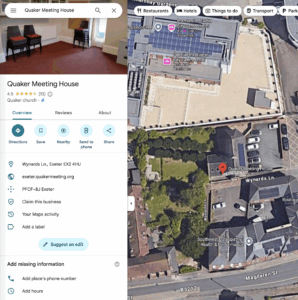
Let’s explore the lifecycles of a meeting within the Quaker Testimony of Truth. Quaker history and its associated buildings are precious to me. This won’t surprise anyone who knows me – I feel that Quaker meeting houses (or any faith-owned building) give a worshipping community a sense of place in the local area. The building acts as a signpost to the people around it. It connects the worshipping group with the surrounding community.
Ten Miles Around
There is a fascinating article ‘Ten Miles Around‘ by Andy Stanton-Henry in the April 2023 Friends Journal.
Maybe ten miles is a humble proposition. But maybe it’s our human reach, even as human beings partnering with the Divine. Maybe it’s our parish, our portion, our piece of the peaceable kingdom. It’s a starting point: a place to stand. We start close in; we center down; we shake our countryside; we inhabit our inside edge. Who knows, maybe we will be led out into new, border-crossing lands. Or maybe we will be led to root deeper and deeper into our home in such a way that disrupts—and heals—the whole region.
Andy Stanton-Henry Tweet
Looking Inwards: The Meeting
Reading this article, combined with a series of articles and a Yearly Meeting preparative session about the Life Cycle of a Meeting, made me wonder if Quakers need to hold their buildings lightly or tightly.
If you hang out in Quaker property circles you’ll hear stories about:
- the meeting which sold the historic, but unsustainable meeting house and moved into the centre of town and is now thriving;
- or the meeting which decided to sell and then had a local group who used the building offer to lease it long-term, and let Quakers use one room on a Sunday;
- or the meeting house which was sold and (only!) twenty years later there was a boom in population and a new meeting was set up;
- or the joy a meeting found moving into rented accommodation and not needing to deal with buildings any more;
- or any other manner of stories either for or against owning property.
Finding Your Place in the Life Cycle
Reading this through and taking part in the Yearly Meeting preparative session helped me decide that this conversation is all part of our testimony of truth.
As Quakers we talk about how we ‘speak truth to power’, whether that is to a local meeting Friend or the new King of England. Whoever is being spoken too, Quakers should approach the opportunities with love and discernment.
But do we truthfully share how we feel?
- How going to Meeting on Sunday can feel like work, or a burden?
- How too much responsibility is falling on too few people, even with some paid support, or a Volunteer Warden or Resident Friend?
- How that Warden or Resident Friend may also be feeling misunderstood and undervalued?
Emily Provance has been led to do some work on meetings. She covers, when they are set up, how they continue, and then how they are laid down when the energies have gone.
This can be terribly painful for all concerned.
MBS has helped several meetings through this process and it’s hard to balance all the varying needs.
- Those who are feeling burned out and burdened,
- Those who feel betrayed and that their efforts are not appreciated,
- Those who accept there is a problem and yet still see sparks of green, so want to give their meeting ‘just one more chance’,
- Those who are ignoring it all in the hope that things will sort themselves out – waiting for someone(s) who will join the meeting, who will solve all their problems, or some other magical solution will appear.
To me, the ultimate question is this: how is our meeting faithful to God’s call for us now?
Emily Provance
Starting Difficult Questions
It can be hard to look at your own worshipping community objectively. It may be useful to see if you can get someone outside or newly arrived to help you as a group explore these ideas. If you are a Quaker then a Local Development Worker would be ideal!
Thinking about your sense of place
- Does your meeting include people who live locally or draw from a wider geographical area?
- Does your worshipping community reflect the community surrounding your building?
- Is it known by, used for, and considered part of that community?
Looking outwards
- Is your worshipping community looking outward to the local community?
- Are there local groups you could join and work with, bringing your unique values and ideas?
- Do you have contact with local schools to offer tours and talks?
- Do you open your building or grounds to the public?
Beacons or Burdens?
This is an old question which can be a good place to start a discussion.
Is your building a beacon to the world surrounding it? Reflecting your values and concerns, a place to stand and be seen?
Or
Is your building a burden that is using energy that should be used elsewhere?

Wendrie Heywood
MBS Founder






